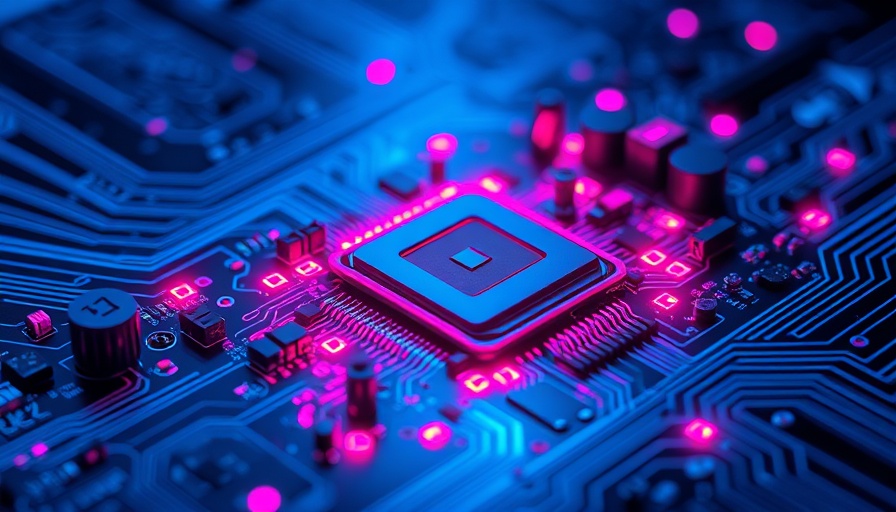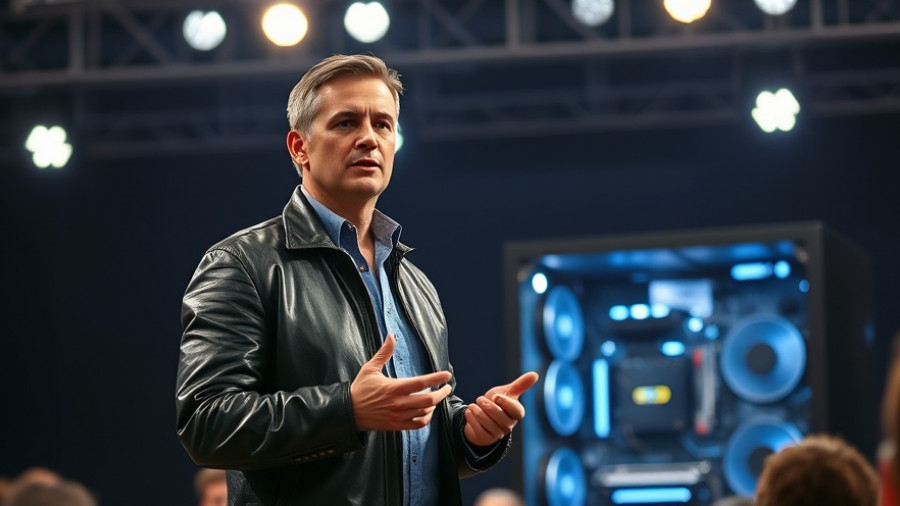
The Shift to 800VDC: Why It Matters for AI Factories
As AI technology continues to evolve and demand rises, the underlying infrastructure that supports these advancements must also undergo a transformation. Navitas Semiconductor's recent announcement regarding the development of 800 VDC power architecture for NVIDIA's AI factories marks a significant step towards meeting the massive power needs of modern artificial intelligence applications. This architecture is designed not only to enhance performance but to ensure scalability and efficiency in operations, fundamentally altering how data centers function.
What Is 800VDC Architecture?
The essence of the 800VDC (Volts Direct Current) architecture lies in its ability to deliver a higher voltage through fewer wires, which reduces power losses and material costs. Traditional power infrastructures have relied on lower voltages that require significant amounts of copper—both costly and heavy—leading to inefficiencies as demands increase. Transitioning to 800 VDC allows for a more streamlined design that can support megawatt-scale projects without the extra burden of copper overload. According to industry reports, the efficiency can improve by up to 5%, while reducing maintenance costs by as much as 70%—an immense benefit for data centers.
The Benefits of High Voltage Power Supply
With the shift towards higher voltage systems, several advantages become apparent:
- Increased Efficiency: By minimizing the number of power supply conversion stages, 800VDC reduces energy losses, thereby boosting overall efficiency significantly compared to traditional systems.
- Space Savings: Higher voltages mean that wiring can be thinner and less bulky, leading to valuable rack space savings for AI computation needs.
- Scalability for AI Growth: As AI workloads soar, the need for flexible and scalable energy solutions becomes paramount. The architecture supports expansion that aligns with future demands seamlessly.
Energy Storage: The Backbone of the New Architecture
Alongside the transition to 800VDC, effective energy storage plays a pivotal role in stabilizing power demands that fluctuate dramatically during AI workloads. Fluctuations in power draw—ranging from low to high in milliseconds—require a robust energy storage system. Integrating multi-timescale energy storage solutions (like capacitors for short bursts and facility-wide battery systems for prolonged usage) will enable data centers to manage these dynamics effectively and ensure continuity in operations.
The Future of AI Factories: Collaboration and Innovation
Organizations such as NVIDIA are actively engaging in partnerships with various silicon and power system providers, aiming to develop standardized protocols for the integration and implementation of 800 VDC architecture. This initiative underscores the importance of collaboration across the industry, ensuring that companies can innovate while maintaining interoperability.
Conclusion: Embracing the Change
For AI enthusiasts and professionals, understanding the implications of the 800 VDC architecture is critical. It is not just about the hardware; it’s about setting a new standard for the entire data center infrastructure. As we look towards the future, keeping an eye on these developments will provide insights into how AI can not only grow in power but do so more sustainably and efficiently.
If you're keen to dive deeper into the future of AI infrastructure, keep an eye on innovations coming from key industry players like NVIDIA, and don’t miss out on upcoming announcements regarding advancements in technology that will define the next generation of AI.
 Add Row
Add Row  Add
Add 




Write A Comment